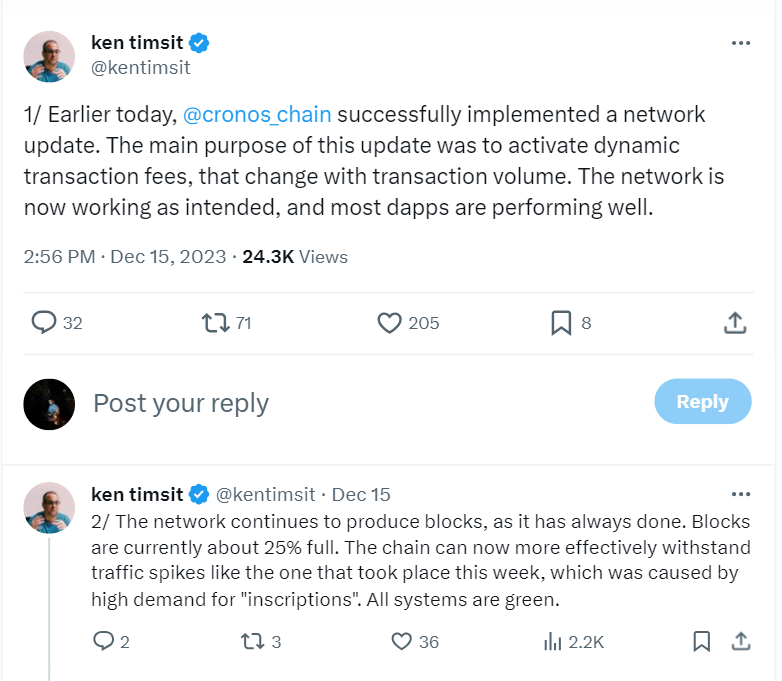
YEREVAN (CoinChapter.com) — The recent surge in Inscriptions, the new form of non-fungible tokens (NFT) popularized by the Ordinals Network, has caused significant issues for various blockchains. Originally launched on the Bitcoin (BTC) chain amid much controversy and debate, it has substantially impacted network performance and costs on a series of networks.
Ordinal Inscriptions Crushing Crypto Networks
For the uninitiated, Ordinal Inscriptions are a type of digital asset on the blockchain network. While comparable to NFTs, these started with being engraved onto individual satoshis (SATS), the smallest units of Bitcoin (BTC).
However, they didn’t stay limited to the Bitcoin network. According to a recent Bloomberg report, some cryptocurrency enthusiasts began using the same technique to create NFTs on various blockchains.
This sudden spike in ordinal inscriptions increased the load on blockchain networks, causing problems.
For example, the volume of transactions with inscriptions surged significantly on the Solana network. According to reports, users created over 287,000 new inscriptions daily. This spike resulted in transactions valued at over $1 million.
Avalanche, meanwhile, recorded over $5.6 million in gas costs associated with ordinal inscriptions in a single day. This sudden surge in activity caused several blockchains to experience outages. Among those impacted were Avalanche, Cronos, zkSync, and The Open Network.
Similarly, Arbitrum, a layer two scaling solution for Ethereum, faced an outage thanks to the surge in activity. According to a Dune Analytics dashboard created by Hildobby, over 90% of the activity on the chain was linked to inscriptions.

Blockchains look for solutions.
The reason why inscriptions became popular is the fact that they are relatively cheaper than smart contract transactions. This affordability factor has resulted in their use in spamming transaction networks. Many developers began minting and transferring tokens using ordinal inscriptions, although they offer little utility despite consuming significant network resources.
This was why many Bitcoin supporters initially opposed them, arguing that the network should be kept solely for financial transactions.
To face these challenges, blockchain networks are now having to innovate to curtail the surge in traffic. For example, last week, Cronos activated dynamic transaction fees that change with transaction volume to withstand traffic spikes more effectively.

Meanwhile, others have welcomed Ordinal Inscriptions. With the next Bitcoin halving event scheduled for April 2024, miners will see a significant cut in their earnings.
The transaction surge through inscriptions on SATS will help miners get earnings for transaction confirmations. For the smooth functioning of the Bitcoin network, it is essential to keep miners incentivized to continue running nods. Perhaps ordinary inscriptions are the answer, even if it comes at a cost.


